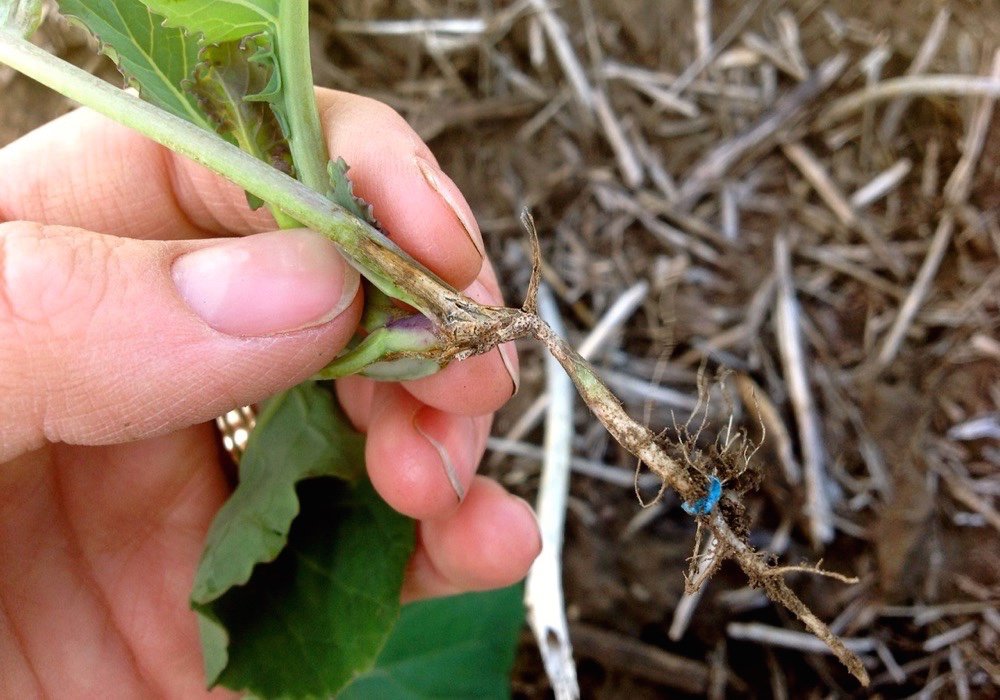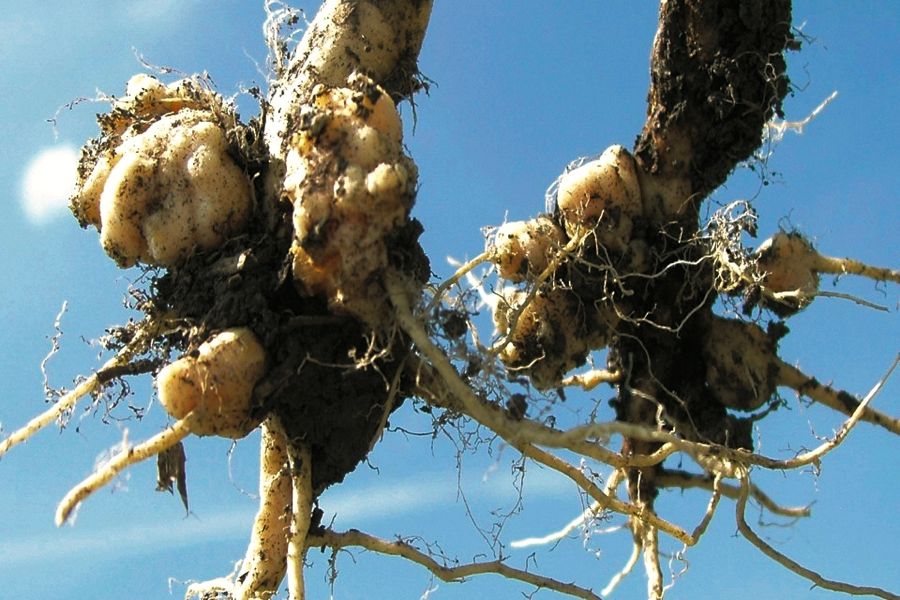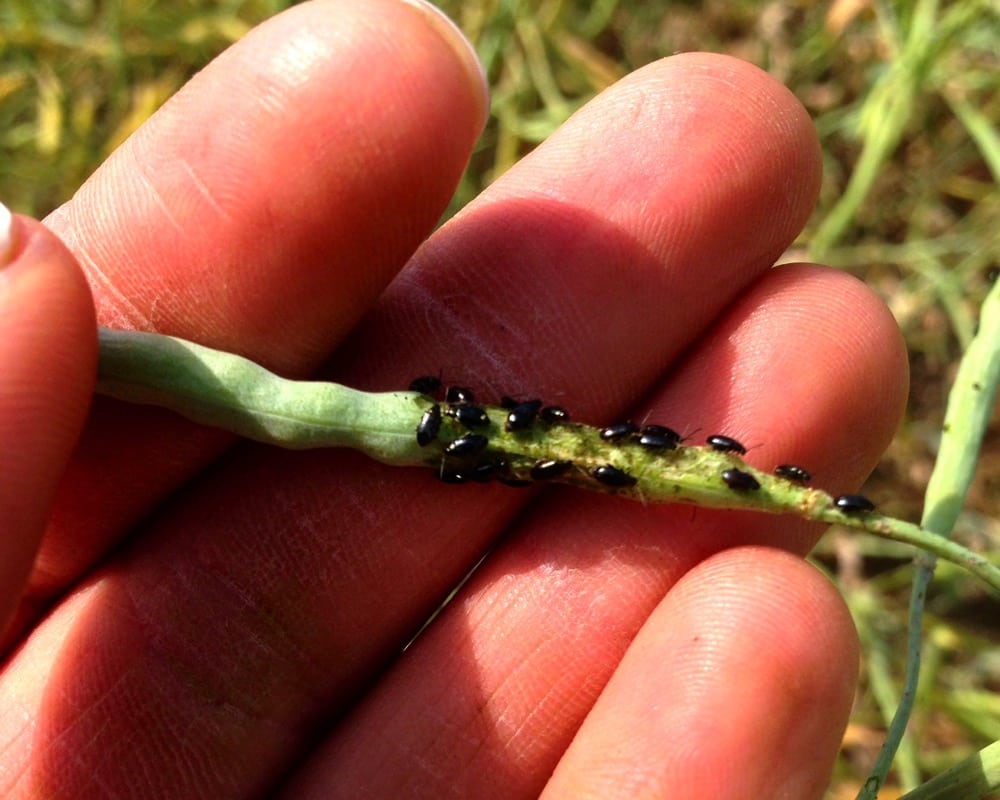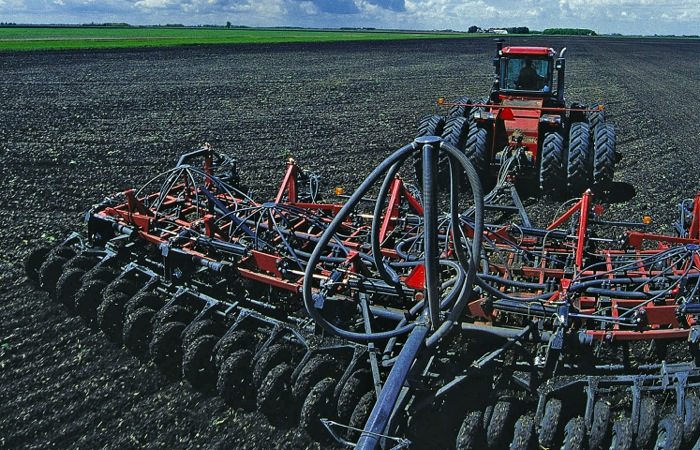Here's a dozen tips to deal with clubroot, both before and after you have a problem

There are several key management tools producers need to apply to minimize the risk of clubroot either reaching a damaging level, and/or to reduce a heavy spore load of the pathogen in the soil to a tolerable level (about 1,000 spores or less per gram or teaspoon of soil will not affect crop performance).
The pathogen spores may or may not be in soil already, says Autumn Barnes, agronomy specialist in southern Alberta for the Canola Council of Canada. In some areas the clubroot pathogen spores seem to be naturally present in the soil*, while in others the disease has been traced to contaminated soil carried in on vehicles or equipment, or carried in on soil blown in from an infected area. A low-level spore load won’t affect canola production, but as spore numbers increase so does the potential damage to crop yield.
A management plan needs to be firing on all cylinders, says Barnes. Do everything you can to keep contamination of clubroot spores off your land, while at the same time do everything you can to minimize the risk or reduce the level of disease that may be in a field. “Keep spore loads low and local,” says Barnes.
Here are key points to consider in no particular order.
*Editor's Note: While this refers to a discussion that took place during a presentation at Airdrie, Alberta, agronomist Autumn Barnes notes that, in general, we have to think of the pathogen in terms of its being brought in from somewhere else.
1. Take a test

Are there clubroot pathogens in your soil now? At a low spore count or low spore load, the disease could be present* but not causing any harm to crops. If you really want to find out, a PCR soil test will serve as an indicator. Be aware, a PCR test can at times produce both false negatives and fall positives, says Barnes so it’s not an absolute answer either.
A more detailed test called a qPCR soil test can also be performed. It is a quantitative PCR test, which will provide a spore count per gram of soil if the disease pathogen is present.
*Editor's Note: Canola Council agronomist Autumn Barnes notes that soil testing for canola spores is difficult, as spore concentration will vary throughout your field.
2. Get out and scout

Scout your fields, be watching. Nothing beats making regular checks of canola crops to observe if there are any odd-looking nodes or bulbs growing on canola plant roots. They probably won’t be noticeable unless there is a spore load of at least 10,000 spores per gram of soil.
Since often the disease is carried into a field by “dirty” equipment or vehicles, start checking around the main field entrance. Check the crop generally in front of the gate area, but also walk out into the field about 200 to 300 yards both to the left and right of the entrance area, pulling up plants here and there to see if there is any sign of the galls growing on the plant roots. The best times to check for signs of the clubroot nodes or galls is at crop flowering, although it might be easier walking and still a good time to check after swathing/harvesting the crop — the disease galls, nodes or bulbs will be clinging to the main root.
3. Become a detective

Investigate weird patches of canola. If most of the field seems to be growing well, but you find a patch that seems to be “underperforming” or appears to be maturing earlier than the rest of the field, definitely check plant roots in this area for any sign of clubroot galls.
4. Control weeds

Check and control weed patches. While the disease can damage and even eliminate yield in canola, other plants such as weeds that are members of the cruciferous family can serve as disease hosts. This includes volunteer canola, mustard, wild mustard, shepherd’s purse, stinkweed and flixweed — check any of those patches for root galls and be diligent about controlling and eliminating those weed patches.
5. Go beyond the field

Check out old yard sites and construction sites, especially if there are weed patches, for any sign of the disease. Some of these old sites might have had garden plots where cruciferous plants such as cabbage and cauliflower once grew and could still be a disease source.
Also check areas where oil and gas, utility or other service companies have done any construction or soil disturbance on your field. These disturbed sites and rights-of-way may be the first places where the disease appears.
6. Keep it still

Don’t move or disturb soil. The disease can spread through contaminated soil being carried into a field on equipment or the tiny disease spores can be moved around in blowing soil. A gram (teaspoon) of blowing soil can carry as many as 220,000 spores and it is amazing how far blowing dirt can travel. Keep the ground covered, maintain or adopt a zero-till, direct-seeding system.
7. Keep it clean

Use proper sanitation techniques. Keep your own equipment clean when moving from field to field and don’t allow dirty vehicles and equipment from unknown areas onto your land. As a landowner you can insist that any contractors, oil industry companies or utility companies wanting access to your land must clean their equipment before entering any fields. “You need to be as tenacious as the disease when it comes to proper sanitation,” advises Ward Toma, general manager of the Alberta Canola Producers Commission. “The landowner has the right to refuse access to any materials or equipment that hasn’t been properly cleaned.”
8. Drill down on sanitation

While it will take a few minutes, stop and knock off as much mud as you can off vehicle and equipment tires and undercarriages when moving from field to field. If you only get 90 per cent of it off that still greatly reduces risk of carrying contaminated soil and disease spores into a field. If you are farming in an area with existing infestations of clubroot, you may want to go a step further and pressure wash equipment between fields.
Water is good, but a solution of 50 per cent water and 50 per cent household bleach will effectively kill the pathogen. And it is not just equipment and vehicle tires — clean yours and any visitors’ boots. Muddy boots can carry a lot of disease spores. Wash them with water or the 50/50 water/bleach solution, and you can even double down and wear the disposable paper or plastic booties.
9. Proper crop rotation

A proper canola crop rotation should provide at least a two-year break between canola (any cruciferous) crops on the same field, and ideally a three- to four-year break is better. If the clubroot disease pathogen doesn’t have a host crop or weeds to live on, spore numbers will begin to decline each year after the canola crop. Remember the goal is to keep spore loads low.
10. Deal with the disease

When you find a plant you suspect is infected with clubroot, have it sent for testing to confirm. Put the plant root in a sealable bag and send it to one of several labs in Western Canada. A complete list can be found on the Canola Council of Canada website at: www.clubroot.ca.
11. Manage patches

If you discover a patch of clubroot it might make sense to seed the area to grass for a few years and avoid it. This can work well if a field entrance area is contaminated, for example. Seed an acre or so around the entrance to grass and leave it. Consider creating another new entrance to the field and then follow proper sanitation procedures when using that entrance.
12. Grow resistant varieties

There are at least 22 clubroot-resistant canola varieties on the market for 2019. If you are in a high- or medium-risk clubroot area, grow one of those*. The clubroot-resistant varieties aren’t a silver bullet for dealing with diseased soil but they help reduce the risk of increasing disease load and you can maintain canola yields. There are several strains of the clubroot pathogen. An example cited — suppose there were five strains, ABCDE, and the variety you select is resistant to strain A. That still leaves potential if any of the BCDE strains are in the soil to flourish. So a clubroot-resistant variety isn’t an absolute fix, but it helps.
The Canola Council of Canada website is a great resource for information on reducing the risk, identifying and managing clubroot. Visit their website at: www.canolacouncil.org.
*Editor's Note: Canola Council agronomist Autumn Barnes notes that the Council does not advise growers to wait until they are in a high-risk area before they deploy clubroot resistance. Instead, use resistant varieties if clubroot is in your community.















